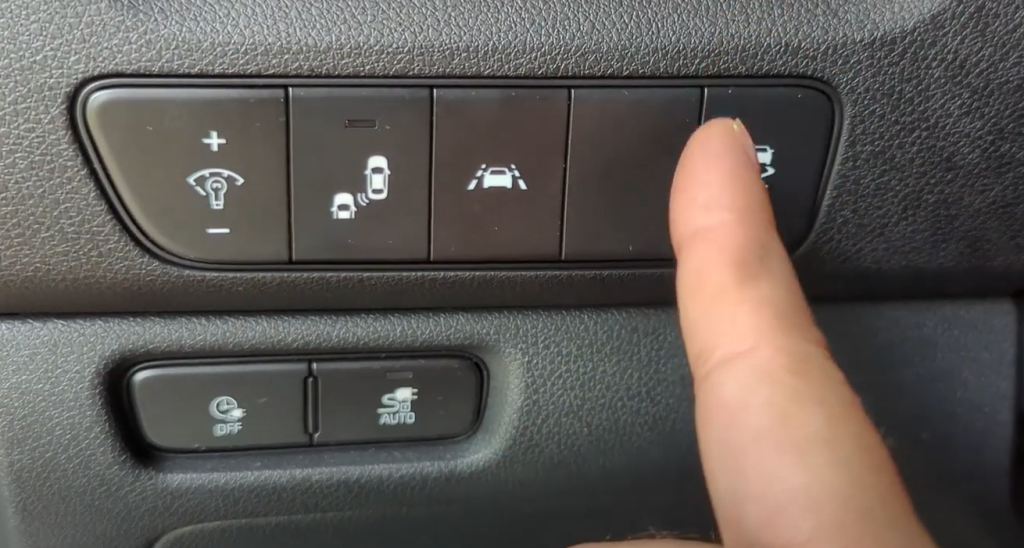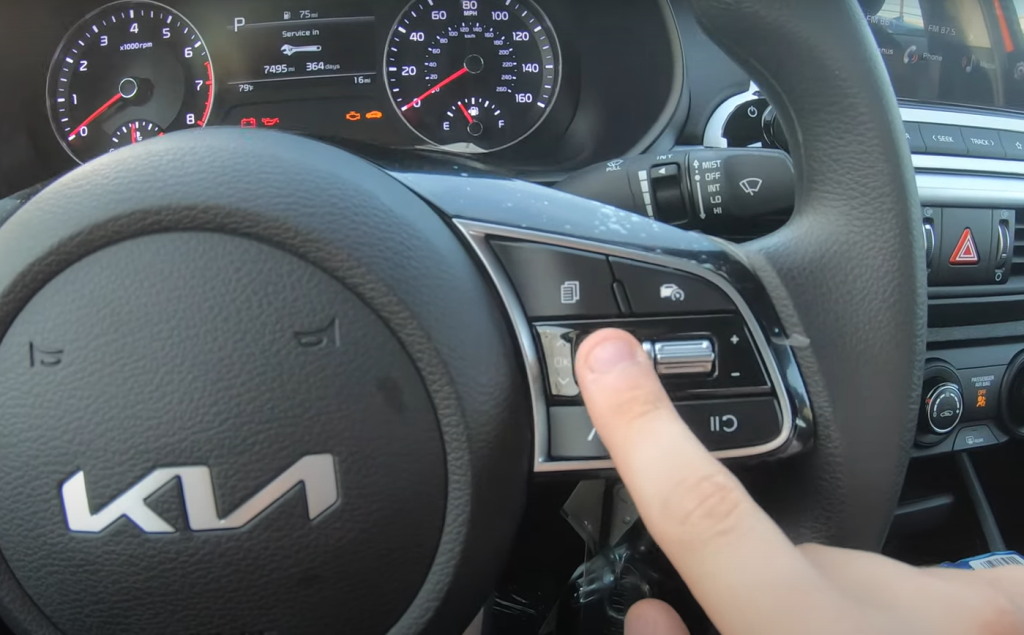Many Kia owners have experienced their vehicles beeping constantly when in reverse. This can be frustrating and confusing, especially if you’re not sure why it’s happening. The most common reason for a Kia to beep in reverse is that the reverse or parking sensor is active. These sensors are designed to alert drivers to obstacles behind the vehicle when backing up.
Sometimes, the beeping may be due to a malfunction rather than an actual obstacle. Faulty sensors, wiring issues, or software glitches can cause the system to beep unnecessarily. In some cases, the beeping might only be audible inside the vehicle, which is meant to warn the driver rather than pedestrians or other motorists.
If your Kia is beeping constantly in reverse and it’s bothering you, there are potential solutions. You might be able to adjust the sensitivity of the sensors or disable the system temporarily. However, it’s important to consider the safety implications before making any changes to your vehicle’s warning systems.
Key Takeaways
- Kia vehicles typically beep in reverse due to active parking sensors
- Constant beeping may indicate a sensor malfunction or system error
- Adjusting sensor settings can resolve unwanted beeping, but safety should be prioritized
Understanding the Kia Reverse Beeping Function
Kia cars have a beeping sound when in reverse gear. This feature helps drivers back up safely and avoid accidents.
Purpose of the Beeping Sound
The reverse beeping in Kia cars is a safety feature. It alerts the driver and people nearby that the car is moving backward. This warning sound can prevent accidents and injuries.
The beep is especially useful in busy areas or tight spaces. It lets pedestrians know a car is backing up. For drivers, it’s a reminder to be extra careful.
In some Kia models, the beeping changes as the car gets closer to objects. This helps drivers judge distances better when parking or maneuvering in reverse.
How the Reverse Beep System Works

Kia’s reverse beep system uses sensors on the car’s rear bumper. These sensors detect objects behind the vehicle.
When the driver shifts into reverse, the system turns on. It starts beeping as soon as the car is in reverse gear. The beeping continues while the car is in reverse.
If the sensors detect an object, the beeping may change. It might get faster or louder as the car gets closer to the object. This gives the driver more information about their surroundings.
Some Kia models also have a screen that shows what the sensors detect. This visual aid works with the beeping to help drivers reverse safely.
Troubleshooting Common Issues
When a Kia beeps constantly in reverse, it often points to a few key problems. These issues can usually be fixed with some basic troubleshooting steps.
Sensor Malfunctions
Reverse or parking sensors are common culprits for constant beeping. Dirt, snow, or debris can block these sensors, causing false alarms. To fix this:
- Clean the sensors with a soft cloth
- Check for any visible damage
- Test each sensor individually
If cleaning doesn’t work, a sensor might be faulty. In this case, replacing the broken sensor should stop the beeping. Costs for new sensors typically range from $100 to $300.
Electrical Problems
Wiring issues can cause reverse beeping problems. Look for:
- Loose connections
- Corroded wires
- Damaged fuses
Check the fuse box for any blown fuses related to the reverse system. Replace if needed. If wiring is the issue, it’s best to have a mechanic inspect and repair it.
Software Glitches
Sometimes, the beeping problem stems from software. To address this:
- Turn off the car completely
- Wait for 2-3 minutes
- Restart the vehicle
If the issue persists, try disconnecting the battery for 15 minutes. This can reset the car’s computer system. For newer Kia models, a software update at the dealership might be needed to fix glitches causing constant beeping.
Safety Considerations
The reverse beeping in Kia vehicles serves important safety functions. It protects both drivers and pedestrians while also relying on proper maintenance.
Importance of Reverse Alert for Pedestrian Safety
Reverse beeping alerts help prevent accidents, especially in busy areas. The sound warns people nearby that a vehicle is backing up. This is crucial for those who may not see the car moving.
Pedestrians, children, and cyclists benefit most from these alerts. The beeping gives them time to move out of harm’s way. In parking lots and driveways, this feature proves invaluable.
Kia engineers designed this system to meet safety standards. It aims to reduce the risk of collisions and injuries. The constant beeping ensures continuous awareness for everyone in the vicinity.
Ensuring Proper Sensor Maintenance
Regular maintenance of reverse sensors is key to their effectiveness. Clean sensors work better at detecting obstacles. Dirt, snow, or debris can interfere with their function.
Kia owners should check their sensors periodically. Wiping them clean with a soft cloth helps maintain sensitivity. If sensors get damaged, they may need professional repair or replacement.
Faulty sensors can lead to false alarms or no alerts at all. This compromises safety. Drivers should pay attention to any changes in beeping patterns. Unusual behavior may indicate a need for sensor inspection or adjustment.
Guidelines for Servicing Your Kia

Regular maintenance and proper servicing are key to keeping your Kia running smoothly. This includes knowing when to seek expert help and performing basic upkeep yourself.
When to Seek Professional Help
Take your Kia to a certified mechanic if you notice strange noises, vibrations, or warning lights. Constant beeping in reverse may indicate sensor issues that need professional attention. Unusual smells, reduced performance, or fluid leaks also warrant a trip to the shop.
Schedule professional service for:
- Oil changes every 5,000-7,500 miles
- Tire rotations every 6,000-8,000 miles
- Brake inspections every 12,000 miles
- Transmission fluid checks every 30,000-60,000 miles
A mechanic should also handle timing belt replacements, major engine work, and complex electrical issues. Always consult your Kia’s owner’s manual for model-specific service intervals.
DIY Maintenance Tips
Many routine tasks can be done at home to keep your Kia in top shape. Check tire pressure monthly and before long trips. Inspect windshield wipers and replace them if they leave streaks.
Easy DIY tasks include:
- Checking and topping off fluids
- Replacing air filters
- Cleaning or replacing cabin air filters
- Inspecting belts and hoses for wear
Keep your Kia clean inside and out to prevent rust and maintain its value. Vacuum the interior regularly and wash the exterior monthly. Pay attention to unusual sounds or behavior while driving. Early detection of issues can prevent more serious problems down the road.
Modifications and Custom Settings
Some Kia owners find ways to adjust or disable the reverse beeping sound. There are both built-in options and aftermarket solutions to consider.
Adjusting Beep Volume or Deactivating the Sound
Many Kia models allow drivers to change the reverse beep volume through the vehicle settings. To do this, drivers can access the audio or safety settings in their infotainment system. Look for options like “Reverse Warning Volume” or “Backup Warning Sound.”
Some Kias have a low, medium, and high setting. Others may only offer on/off choices. If the lowest setting is still too loud, drivers can try covering the speaker with sound-dampening material.
It’s important to note that completely disabling the sound may not be possible due to safety regulations. Always check local laws before making changes.
Aftermarket Solutions
For those seeking more control, aftermarket options exist. Some drivers install volume control modules that allow finer adjustments to the beep volume.
Another option is replacing the stock reverse alarm with a quieter, more pleasant sound. Some kits use “white noise” instead of beeps.
Drivers can also consider installing a switch to toggle the reverse sound on and off. This lets them use the sound when needed and disable it in quiet areas.
Before installing any aftermarket solutions, it’s crucial to consult with a professional. Improper modifications can affect the car’s electrical system or void the warranty.
Frequently Asked Questions
Kia owners often have questions about the reverse beeping sound in their vehicles. The following addresses common concerns about disabling or adjusting this safety feature across different Kia models.
What steps are required to disable the reverse beeping sound in a Kia vehicle?
Disabling the reverse beeping sound in a Kia typically involves accessing the vehicle settings through the infotainment system. Navigate to the “Vehicle Settings” menu and look for “Driver Assistance” or “Safety Features.” Find the option for “Reverse Warning Sound” and switch it off.
Some Kia models may require a visit to a dealership to deactivate this feature.
Why is my Kia’s parking sensor issuing a continuous beep when I engage reverse?
A constant beep when reversing often indicates an active parking sensor. This could be due to an object in the sensor’s range or a malfunction. Check for obstacles near your vehicle. If the area is clear, the sensor may need cleaning or recalibration.
How can I turn off the backup warning system in my Kia Sportage?
To turn off the backup warning in a Kia Sportage, use the dashboard display. Go to “User Settings,” then “Driver Assistance,” and find “Parking Safety.” Look for an option to disable the backup warning system and select it.
Is there a way to disable the reverse sound feature in the Kia EV6 model?
The Kia EV6 allows users to adjust reverse sound settings. Access the vehicle settings menu on the touchscreen display. Look for “EV Settings” or “Sound Settings.” Find the option for “Virtual Engine Sound” or “Reverse Warning Sound” and turn it off.
What causes the Kia Niro to emit a beeping noise while reversing?
The Kia Niro’s beeping noise during reverse is a safety feature. It alerts pedestrians and nearby drivers that the vehicle is backing up. This is especially important in hybrid and electric models, which are quieter than traditional cars.
Can the reverse beep alert be deactivated in a Kia car?
Many Kia models allow deactivation of the reverse beep alert through the vehicle settings. However, some may not permit this for safety reasons. Check your owner’s manual or contact a Kia dealer to confirm if your specific model allows deactivation of this feature.


